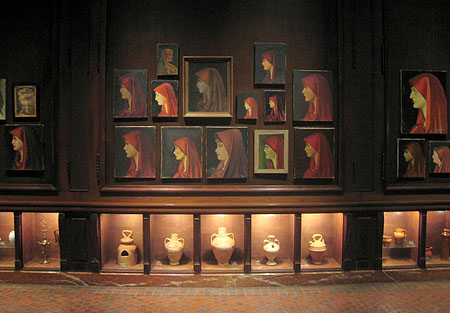Autopsy of the Invisible
Sunday, February 24th, 2008
I’ve been in Buenos Aires, Argentina for a bit more than two weeks. The purpose of my stay is the exhibition Autopsia de lo invisible (Autopsy of the Invisible), which I curated for the Museo de Arte Latinoamericano de Buenos Aires – Fundación Costantini. (The museum is most commonly known as MALBA.) Autopsia de lo invisible is one in a series of contemporary art exhibitions that are part of MALBA’s program Contemporáneo, a series of rotating exhibitions featuring work by local, national and international artists through in-house and guest-curated exhibitions. Begun in 2002, MALBA’s Contemporáneo typically presents four exhibitions a year, one of which is organized by an international curator, as in the case of Autopsia de lo invisible.
Autopsia de lo invisible is a group exhibition including artworks by Juan Manuel Echavarría (Colombia), Regina José Galindo (Guatemala), Mario García Torres (México), Ignacio Lang (Puerto Rico) and Teresa Margolles (México). This exhibition explores the idea of artistic research as an autopsy that involves dissecting a topic or social body of sorts in order to reconstruct historical deeds or contemporary events. Beyond the aseptic, clinical format of a scientific laboratory or the white cube of modern and contemporary galleries, the exhibition design of Autopsy of the Invisible proposes to go backstage, so to say, behind a curtain. The exhibition’s title plays with the early and the contemporary and most common definition of autopsy. “An eye-witnessing” is a definition of autopsy that emerges during the mid-seventeenth century, which derives from the combination of the Greek “autos” (self) and “opsis” (a sight). The most common meaning of this term today refers to the dissection and inspection of a corpse to determine cause of death.
There are two other strong influences in this exhibition. One comes from the history of conceptual art, from the movement’s beginnings during the 1960s in particular, when the articulation of ideas came before objects’ materialization, where the assumption was that viewers would put into practice a sort of faith in something unseen, something without a physical presence. The second influence comes from contemporary cultural and socio-political events based on some kind of ambiguous presence—events that at times seem not to exist, events presented as phantom deeds, whose concrete definition is hard to discern and whereby any determined impact that these have on collective memory is similarly elusive.
Autopsy of the Invisible presents a group of artists who work with pseudo-scientific methodologies—physical or social autopsies—in creating their work. Their practice involves collecting and presenting fragments of existing narratives or objects, which in their reconfiguration make use of extended object labels or accompanying text to explain the work’s context or materials. In this sense, you could say that these works depend on a diagnosis in order to be comprehensively understood and experienced. With the works presented in this exhibition, these artists delve into disappearances, kidnappings, deaths gone unnoticed and deformations and interruptions in reality.
While the English section of MALBA’s website does not have a description of this exhibition (nor of others in the Contemporáneo program), a brief description is included in the Spanish section, which you can read here. In the following days, I’ll include some exhibition installation shots, as well as details of the artworks.
Finally, I should add that aside from working on the exhibition –which opened last Thursday, and closes in mid-April– I’ve been visiting numerous artist’s studios and exhibitions in town, as well as attending other cultural events and parties. Meeting people here, all creative, bright and beautiful, has been one of treats of my stay. I’ll write about this next.


